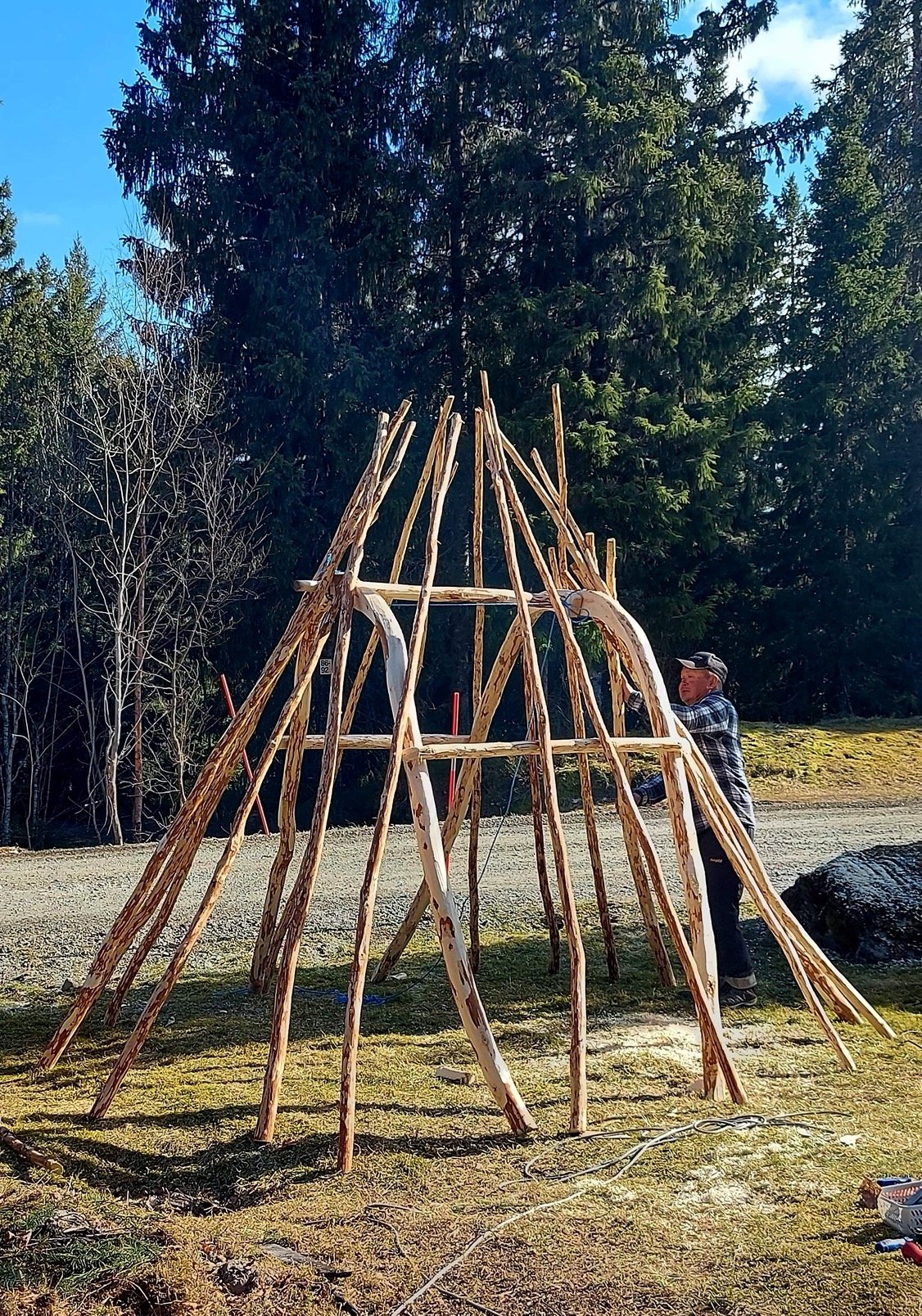Hovren Gåetie
Sissel M. Bergh
Transcription
Sissel M Bergh:
Think of a tent-cloth – how it’s kind of like the sky, and the fire hearth is the sun – or the human heart, in other words, the fire is what keeps us alive.
Narrator:
You are listening to Sissel M Bergh, a South Sámi artist talking about Hovren Gåetie, or ‘elkskin shelter’.
Sissel M Berg:
Elkskin is called hovre hovde and what is a bit strange is that there are lots of sky-related concepts that are linked to this kind of leather – so we think of the sky as skin!
If you’ve ever helped to butcher an elk, you’ll know that when you take off the skin and look at it on the inside and spread it out, it’s like looking straight up at the sky. It’s such a brilliant blue. It’s just like a summer’s day.
Where they haven’t managed to scrape off the fat, there are these kind of beautiful fatty clouds. So, it really is just like the sky…
… and of course, elks are the largest animals, so you get a pretty big tent-cloth! When it’s dried, then you can grease it with animal fat and then it’s like a rainproof tarpaulin… and you can see the sky.
And so, in rock art, I mean things that are carved into the rock, we find this kind of elk that has something inside it that looks like a house. And I think that what we have here, which is the Sámi, or the South Sámi, star map, is about a kind of sky hunt.
During the night, the elk constellation rises and crosses the sky, and then hunters come and try to shoot it with arrows. But they never hit their target, because the Pole Star is in the way. And in fact the elk must never die – the hunt has to go on and on forever. Because if the elk actually gets hit, the world will end.